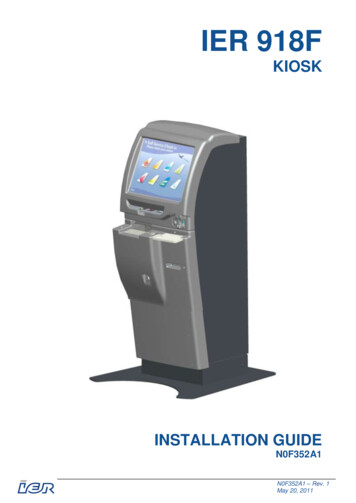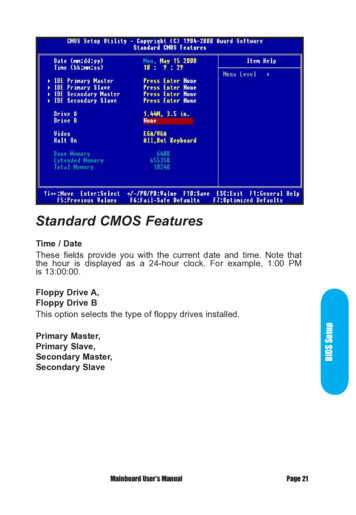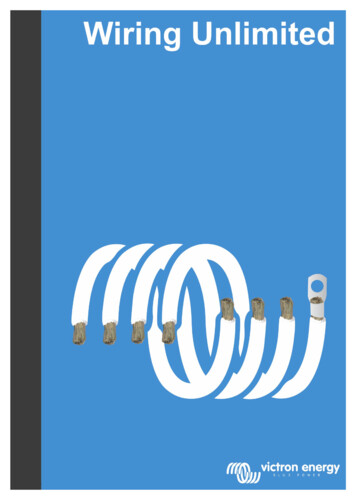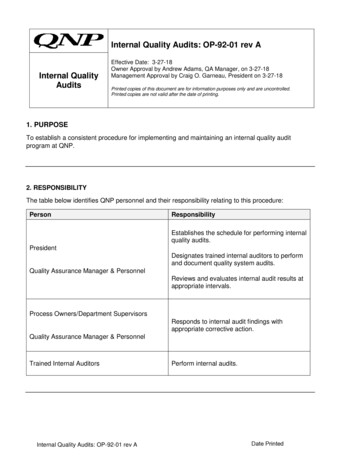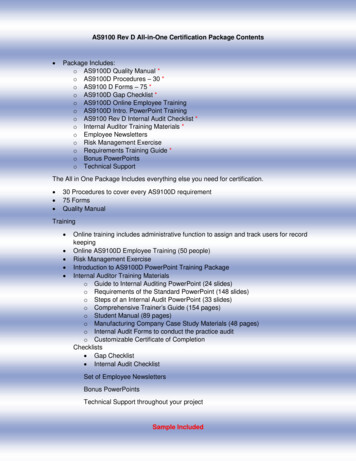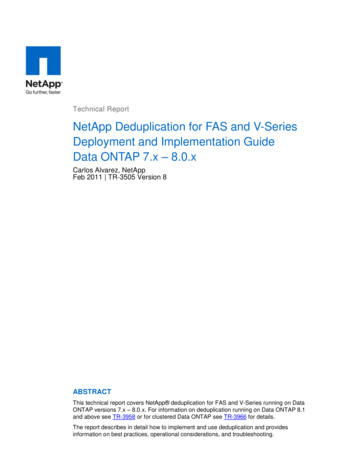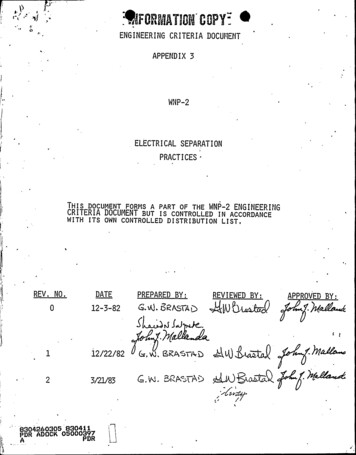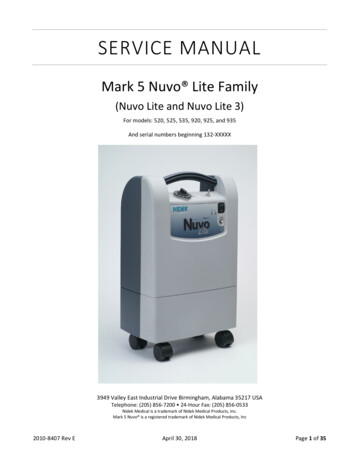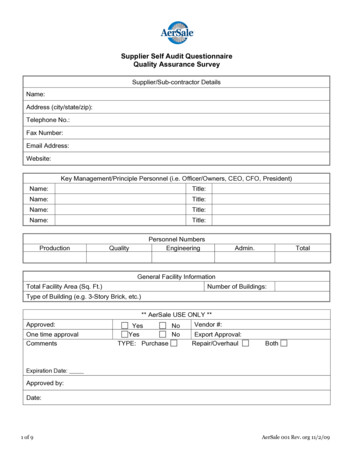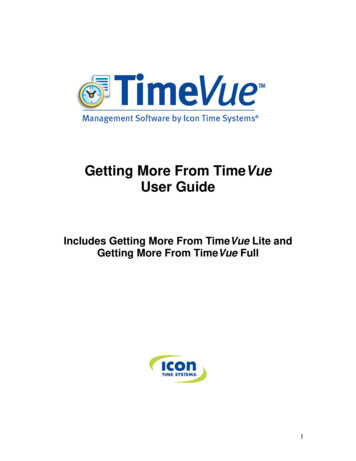
Transcription
Getting More From TimeVueUser GuideIncludes Getting More From TimeVue Lite andGetting More From TimeVue Full1
Table of ContentsTable of Contents. 1Table of Contents. 2Getting More From TimeVue – Introduction . 4More on Buttons and Entering Data . 5Tracking TimeVue File Information and Optional Modules. 5Getting More From TimeVue Lite – Time Clock Rules. 6Rounding Rules. 7Getting More From TimeVue Lite – Time Clocks. 8Getting More From TimeVue Lite – Departments. 10Getting More From TimeVue Lite – Employees. 12Getting More From TimeVue Lite – Punches. 14Getting More From TimeVue Lite – Archiving and Restoring. 16Archiving Data. 16Restoring Data . 17Getting More From TimeVue Lite – Poll Logs . 18Getting More From TimeVue Lite - Reports . 19Report Types (window) . 19Time Frames (window). 20Report Options (window) . 20Show Report As: . 20Getting More From TimeVue Lite – Payroll Exports . 22ADP Payroll Services . 22PAYCHEX Payroll Services. 23Preview 0002 . 23QuickBooks Pro Timer . 24Getting More From TimeVue Full – Time Clock Rules. 26Custom Overtime . 26Custom Rounding (Optional Module) . 27Custom Hours (Optional Module) . 28Getting More From TimeVue Full – Auto Polling. 29Auto Polling (Optional Module). 29Getting More From TimeVue Full – Departments. 32Differentials . 32Getting More From TimeVue Full – Employees. 341. Accruals . 342. Message (Employee Messaging) . 353. Global Messages . 354. Sort Categories. 355. Memos. 36Getting More From TimeVue Full – Punches. 37Getting More From TimeVue Full – Reports . 38Personnel Report. 38More Options . 38Getting More From TimeVue Full – Security. 40User Security. 402
Getting More From TimeVue – Ethernet Time Clock Configuration. 42Setting up Multiple Ethernet Clocks. 47Preparing a Time Clock for Remote Location Installation. 49Index . 523
Getting More From TimeVue – IntroductionWindow Descriptions - All TimeVue screens are accessed through the TimeVueSwitchboard. Each screen has different areas, which are described below.31427651. Screen – In this example, the Employees screen is displayed.2. Tool Bar – Contains buttons and drop-down windows to edit and navigaterecords.3. Tool bar buttons – Used to edit the current record.4. Section – Area used to display or enter specific category details. In the aboveexample, there is an Employee Details, Departments, and Time Clocks section.5. Table – Section containing a grid of settings and assignments.6. Section buttons - Used to edit and modify the table in each section.7. Drop-down window – Multiple selection windows.In addition, you can use tool-tips and Explain boxes to learn how the software works. To view a tool-tip, place the mouse over any button on the screen. Click on the Explain link to get information on each section on the screen.NOTE: New TimeVue Full users should also read the “Getting More FromTimeVue Lite” sections to understand basic TimeVue functionality.4
More on Buttons and Entering Data There are generic buttons that appear in each section of a screen thatcontains a table. Selecting the “ ” (Add a new row) button will addan item or row to the table. Selecting the “-“ (Delete the selectedrow) button will remove the selected item or row from the table.Selecting the “printer” button will print the contents of the table.This is handy if you simply want to print a list of your departments orthe punches for a particular employee. You can do this directly fromthe Department or Punches screen for example. Selecting the print button in the screen tool bar will print that screen. To enter information in date fields, use the drop-down arrow todisplay a calendar. Simply use the left and right arrows at the top ofthe calendar to select the desired month and then click on the desiredday in the month. Click the red circle in the bottom left of thecalendar to quickly select today’s date. If you don’t want to use thecalendar, manually type in the date in the date window. Some buttons need to be toggled in order to enable or disable afeature. The tool-tip will indicate the “status” of the feature. Thebutton will also be displayed with a red “X” if the feature is disabled.Tracking TimeVue File Information and Optional Modules From the TimeVue Introduction screen, select the File Info button toview program and company file location information. To link to acompany file in a new location, select the Relocate button on theinformation screen. From the TimeVue Introduction screen, select the Install Modulesbutton to install optional upgrades such as Custom Rounding,Custom Hours, Auto Poll, Employee count upgrades, and more.Talk to your dealer for pricing and details.5
Getting More From TimeVue Lite – Time Clock Rules134521. Printer button - used to print the Time Clock Rules screen.2. Employee Greeting - Select the Greeting link to enter up to three differentmessages that will appear on the display of the time clock.3. Warning Flags - Set warnings to be flagged for punches. If a punch pair isless than or exceeds the specified time, a red “W” will appear next to thepunch pair in your reports and in the Punches screen.4. Rounding - Use the drop-down Rounding window to select the type of globalrounding to be used for your hourly calculations. Details on rounding rulesare at the end of this section.5. Data Fields- Collect optional data from the time clock. For example, tips or ajob number can be recorded for reporting purposes. Enter a job name or task in the datafld window or leave it at default. Thisname will display on the time clock. Select whether the information is collected on the IN or OUT punch. Choose the format (number of digits) of the data to be entered at the timeclock. Select the Show Totals checkbox to total the datafld entries on yourreports. Read the “Getting More From TimeVue Lite – Departments” section forinstructions on activating this Employee Input feature.NOTE: For more information on Custom Rounding, Custom Hours, and Autopoll, referto the “Getting More From TimeVue Full – Time Clock Rules” section later in thismanual.6
Rounding RulesThere are five different rounding rules available from the Roundingdrop-down box. Rounding affects ALL punches in TimeVue.NOTE: Custom rounding is only available in TimeVue Full. None - Punch duration is based on the actual time registered onthe time clock. TimeVue calculates totals to 1/100th of an hour. Quarter Hour - Rounds and calculates punches from the nearest quarter of an hour,with the split occurring in the middle of each quarter hour. This is often referred to as7/8 rounding. To illustrate:7 minutes 59 seconds rounds back.8 minutes 00 seconds rounds forward.Example:A punch at 7:52am would calculate as 7:45am.A punch at 7:53am would calculate as 8:00am.Slant Hour - Quarter hour rounding similar to above except the break point occurs onthe 5th minute or 10th minute depending on whether it is an IN punch or an OUTpunch. (9/5 split on IN punch, 5/9 split on OUT punch.)To illustrate:4 minutes 59 seconds rounds back.5 minutes 00 seconds rounds forward.Examples:An In punch at 7:50am would calculate as 7:45am.An In punch at 7:51am would calculate as 8:00amAn Out punch at 5:09pm would calculate as 5:00pm.An Out punch at 5:10pm would calculate as 5:15pm. Tenths Hour - Tenths of hour’s calculation (no rounding occurs). This selectioncalculates punches from the tenth hour point and advances each six minutes.To illustrate:Example:Minutes10th00-05 06-11 12-17 18-23 24-29 .0.1.2.3.4Minutes10th30-35 36-41 42-47 48-53 54-59 .5.6.7.8.9An In punch at 7:30am would calculate as 7.5am.An Out punch at 4:05pm would calculate as 4.0pm.7
Getting More From TimeVue Lite – Time Clocks134521. Use the icon buttons on the TimeVue tool bar to set up your clocks in theTime Clocks screen. Place your cursor over each button and a tool-tipdescription will appear describing each button’s operation. Three importantbuttons are described below:Reset selected clock - Select this button if you have only one clock andhave made any changes to your employees in the program. Thiscommand causes TimeVue to send the updated information to the clockthe next time it is polled.Reset all clocks - Select this button if you have multiple clocks andhave made any changes to your employees in the program. Thiscommand causes TimeVue to send the updated information to all clocksthe next time they are polled.Set the time clock version - This corresponds to the firmware versionof your Icon Time Systems data terminal. If you have a newer clock,leave the setting at V7D or above.2. Select additional clock types: Select HPx000 if you are using an RS232, RS422, modem, or EthernetHandPunch unit. Select modem if you have an Icon Time Systems data terminal with amodem installed. Select RS485 if you are using an Icon Time Systems data terminalwith an RS485 option.8
Select RS232 if you have an Icon Time Systems data terminal with anEthernet (TCP) module installed.3. Entering a Dialup String: For a Handpunch modem unit, enter the following dialup string:MODEM:AT&F0:”phone number”. An example would be For a HandPunch Ethernet unit, enter the dialup string:NET:”IP Address”:UNIT0 . An example would be For an Icon Time Systems modem data terminal, enter the dialupstring: MODEM:ATE1:”phone number”. An example would beNOTE: For Icon Time Systems ProxE or Ethernet (TCP) clocks: Install the Tibbo Device Server utility and instructions from theStart\Programs\Icon Time Systems program group. Review the documentation at the end of this user guide in theEthernet Time Clock Configuration chapter. Use the Tibbo utilityand documentation to configure your clock with TimeVue. The Tibbo utility is used to configure a static IP address and tocreate a virtual serial port. The virtual serial port is used toestablish communication between TimeVue and the time clock.4. Test - After completing the entry for your time clock, click the Test button toverify connectivity with the clock.5. Set Time - Use the Set Time button to set the time on your time clock basedon your current computer’s date and time. This will not work with modemclocks. Refer to the HandPunch CD for directions on setting the time of dayon HandPunch units.NOTE: HandPunch Users - If you have installed a Handpunch unit, make sure you haveentered your HandPunch option code. The option code is located on a sticker that youreceived with your software. In TimeVue, select Install Modules from the Switchboardand enter the code. Again, directions on setting up the HandPunch are on the RSIdocumentation CD.9
Getting More From TimeVue Lite – Departments12341. Autolunch - Create an Autolunch deduction for each department. In thisexample, anyone in the Office department will get 30 minutes deducted from theirdaily hours if they work for more than 4 total hours during a shift. The Saledepartment will get deducted a 60 minute lunch after 5 hours. Enter 0 for min andhrs if employees are required to clock out for lunch.NOTE: Autolunch by Day Button - Select this button if employees transfer betweenmany different departments or clock IN and OUT many times during the day.If the total hours worked for a group of punches satisfies the hours entered inthe Lunch column, Autolunch will be deducted for the day. If Autolunch byDay is enabled, a series of question marks (?) will appear in the Lunchcolumn in the Punches screen. The actual lunch deduction will show up on atime card or employee report.2. Revision zones - Create optional revision zones if everyone in a particulardepartment works the same shift hours.In this example, everyone in the Office department works 8:00am to 4:00pm. TheIn Zone is used to prevent giving employees extra minutes if they clock IN a littleearly. The Out Zone prevents giving employees extra time if they clock OUTlate. This is a form of rounding specific to each department. Revision zones takeprecedence over the rounding rules set in Time Clock Rules. In the aboveexample, if an employee clocks in between 7:45am and 8:00am, their time won’tstart calculating until 8:00am. If an employee clocks out between 4:00pm and10
4:15pm, their OUT time is rounded to 4:00pm. If the IN or OUT punch is outsidethese zones, the time does not get altered.3. OT Rules - Select separate overtime rules for each department. Overtime rulesare established in the Time Clock Rules screen.4. DATAFLD - Select the DATAFLD checkbox if people in the department will berecording additional information such as tips, job numbers, or task numbers at thetime clock. Review the “Getting More From TimeVue Lite – Time Clock Rules”section for more details on this field. DATAFLD information will appear in theDATAFLD column of the punches screen and employee reports.11
Getting More From TimeVue Lite – Employees21345691087111. Find employee - Use the arrow buttons, drop-down name window, ordrop-down employee ID window to locate a particular employee.2. Select the Add New Employee or Delete Current Employee buttons toadd or delete employees, respectively.3. Select the Display Employee Roster Report button to view or print alist of your employees and their ID numbers.4. Select the Assign New Badge Number button to reassign the employeeanother Badge\ID number. Enter the new ID number and click OK asshown in the screen below.5. Select the Require Validation button to toggle the Validate In/Outsoption. This option should be enabled UNLESS employees are allowedto clock IN at one clock and clock OUT at a second clock during thesame shift. The tool-tip that appears when you hover your mouse cursorover the button will indicate whether this option is enabled or disabled.In most cases, leave this option ENABLED. This option affects ALLemployees.12
6. Select the Show Picture button if you want to display a .bmp or .jpg ofthe employee. Simply browse to the location of the file after doubleclicking in the picture area.7. Class - Create a unique classification name for a group of employees.This can be used to assign global hours to just that group. Paid holidaysare an example of global hours.8. Assign an optional Payroll ID number if it is required for your payrollprocessing software.9. Show Hours and Swipe and Go: Select Show Hours if you would liketo display the total hours worked by the employee.NOTE: Show hours - works on a weekly basis. The clock must be polled twoconsecutive times before the employee clocks in the next shift to properly displaytotal hours through the previous shift.Swipe and Go: Select this option if you want the employee to simply entertheir ID number or swipe their badge at the time clock. The clock will display“Entry Recorded” and nothing more. Do not use Swipe and Go if employeesneed to change departments, jobs, or if you would like them to manually pressthe IN or OUT buttons when using the time clock.10. Assigning Departments - You can assign an employee to multiple departments byselecting the “ ” (Add a new row) button in the Departments section. An optionalwage can be assigned for each department. Use the Department tool bar buttons toarrange the department list order: The choices are - move the department to the top of the list, up one row,down one row, move to the bottom of the list, show department at the timeclock, and hide department at the time clock. Departments will display atthe time clock in the descending order of the Department section list.11. Assigning time clocks - Select the “ ” (Add a new row) button in the Time Clockssection to assign the employee to a time clock. To delete an assignment, highlight theclock name and select the “x” (Delete the selected row)button.Employees can be assigned to multiple time clocks. Select the “ ” button in the Time Clocks sectionto add a clock. In the Assign Time Clock window, click next tothe clock name in the Time Clock column toassign the clock to the employee.13
Getting More From TimeVue Lite – Punches61543872View and edit punches after they are downloaded from the time clock. Punches can alsobe entered manually in the punches screen.1. Add or delete punches - Selecting the Add New Punch Pair button willcreate a new row in the Punches screen. You can manually add punchesin the table
6 1. Printer button - used to print the Time Clock Rules screen. 2. Employee Greeting - Select the Greeting link to enter up to three different messages that will appear on the display of the time clock. 3. Warning Flags - Set warnings to be flagged for punches. If a punch pair is less than or exce
